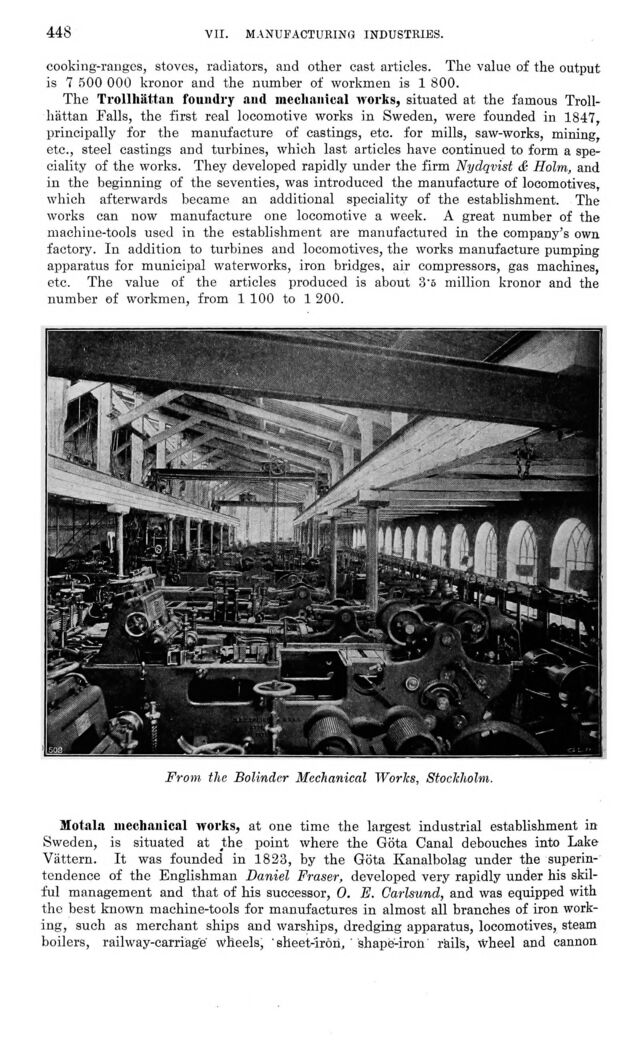
Full resolution (JPEG) - On this page / på denna sida - VII. Manufacturing Industries. Introd. by [G. Sundbärg] K. Åmark - 10. Metal and Machine Industry. By Alf. Larson

<< prev. page << föreg. sida << >> nästa sida >> next page >>
Below is the raw OCR text
from the above scanned image.
Do you see an error? Proofread the page now!
Här nedan syns maskintolkade texten från faksimilbilden ovan.
Ser du något fel? Korrekturläs sidan nu!
This page has never been proofread. / Denna sida har aldrig korrekturlästs.
448
vii. manufacturing industries.
cooking-ranges, stoves, radiators, and other cast articles. The value of the output
is 7 500 000 kronor and the number of workmen is 1 800.
The Trollhättan foundry and mechanical works, situated at the famous
Trollhättan Falls, the first real locomotive works in Sweden, were founded in 1847,
principally for the manufacture of castings, etc. for mills, saw-works, mining,
etc., steel castings and turbines, which last articles have continued to form a
speciality of the works. They developed rapidly under the firm Nydqvist & Holm, and
in the beginning of the seventies, was introduced the manufacture of locomotives,
which afterwards became an additional speciality of the establishment. The
works can now manufacture one locomotive a week. A great number of the
machine-tools used in the establishment are manufactured in the company’s own
factory. In addition to turbines and locomotives, the works manufacture pumping
apparatus for municipal waterworks, iron bridges, air compressors, gas machines,
etc. The value of the articles produced is about 3’S million kronor and the
number of workmen, from 1 100 to 1 200.
From the Bolinder Mechanical Works, Stockholm.
Motala mechanical works, at one time the largest industrial establishment in
Sweden, is situated at the point where the Göta Canal debouches into Lake
Vättern. It was founded in 1823, by the Göta Kanalbolag under the
superintendence of the Englishman Daniel Fraser, developed very rapidly under his
skilful management and that of his successor, O. E. Carlsund, and was equipped with
the best known machine-tools for manufactures in almost all branches of iron
working, such as merchant ships and warships, dredging apparatus, locomotives, steam
boilers, railway-carriage wheels, ’sheet-irön, ’ shape-iroü ràils, wheel and cannon
<< prev. page << föreg. sida << >> nästa sida >> next page >>